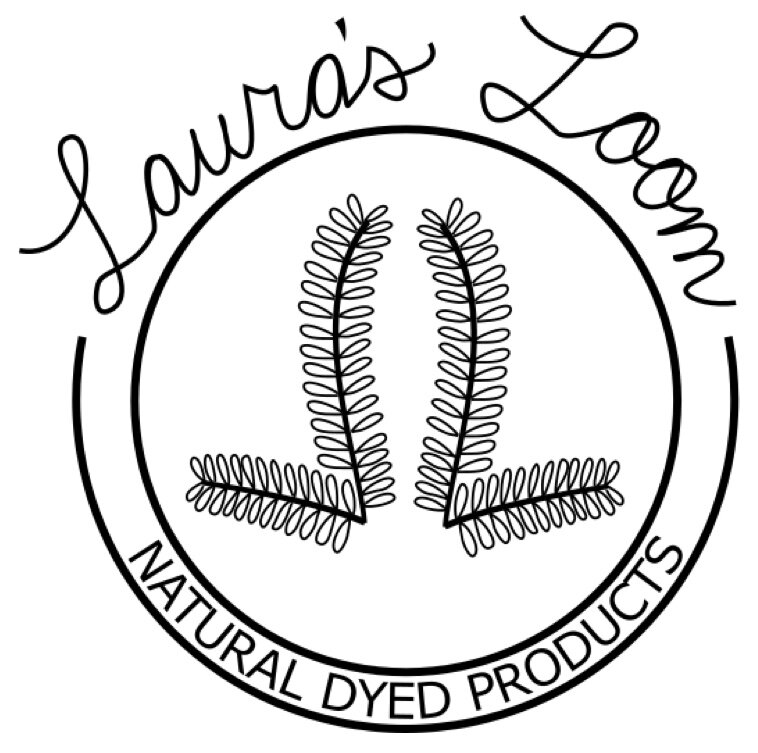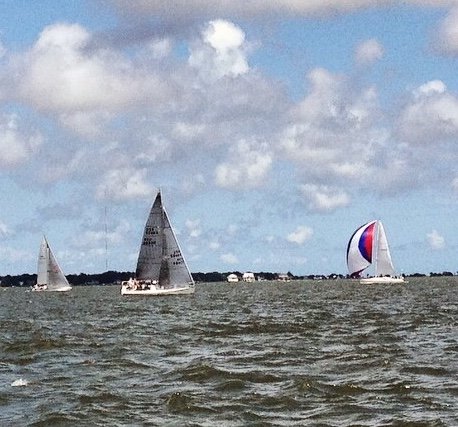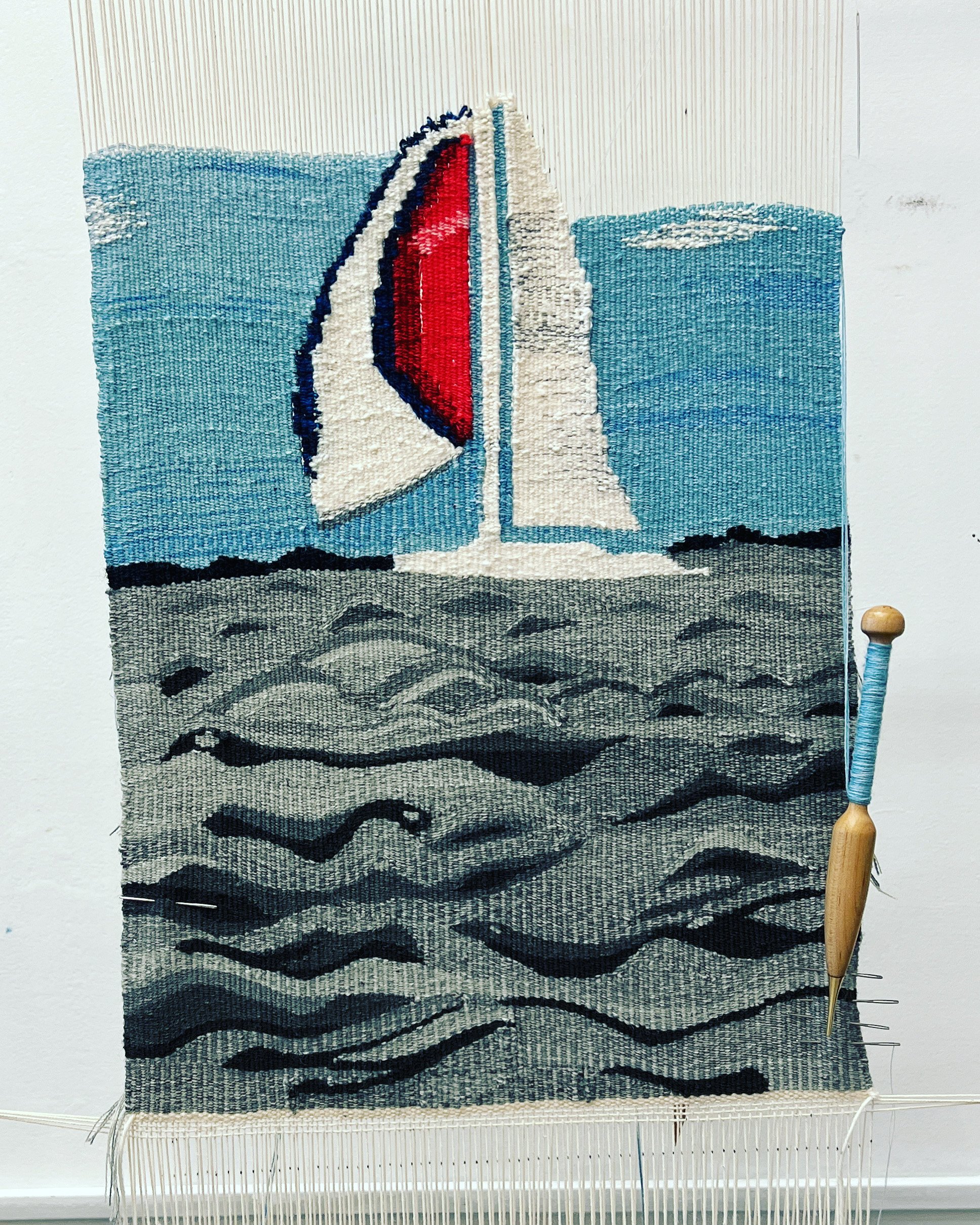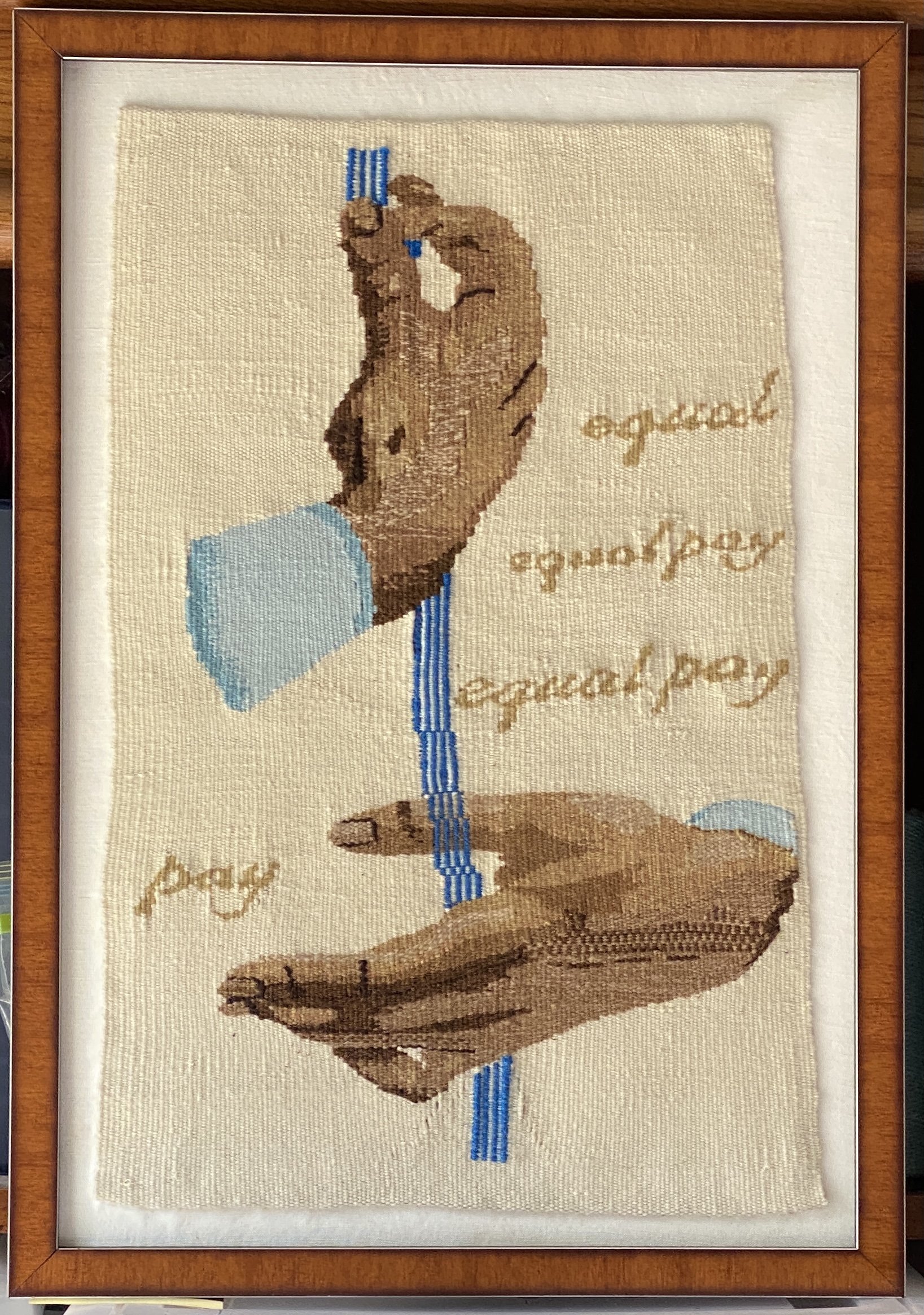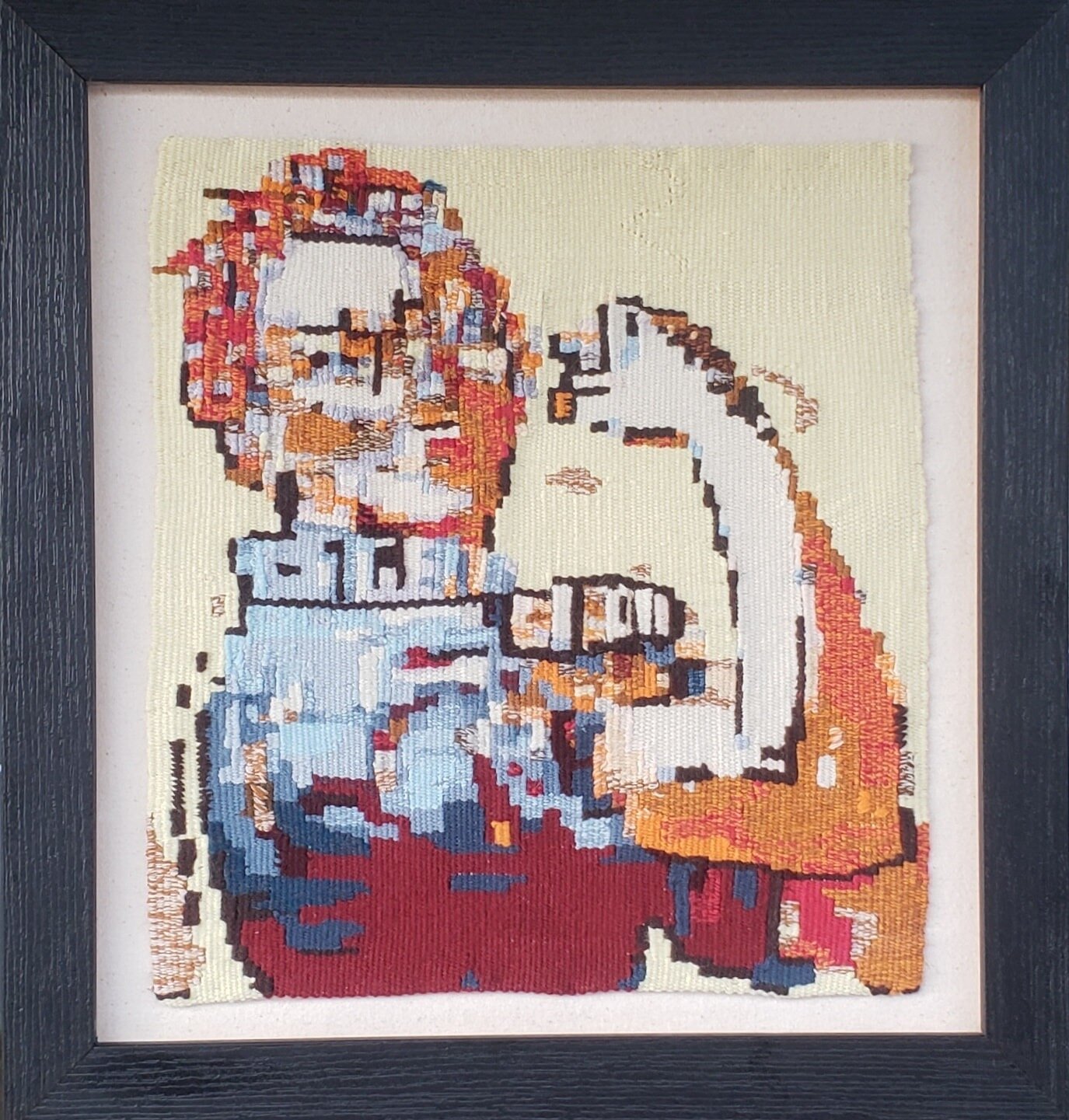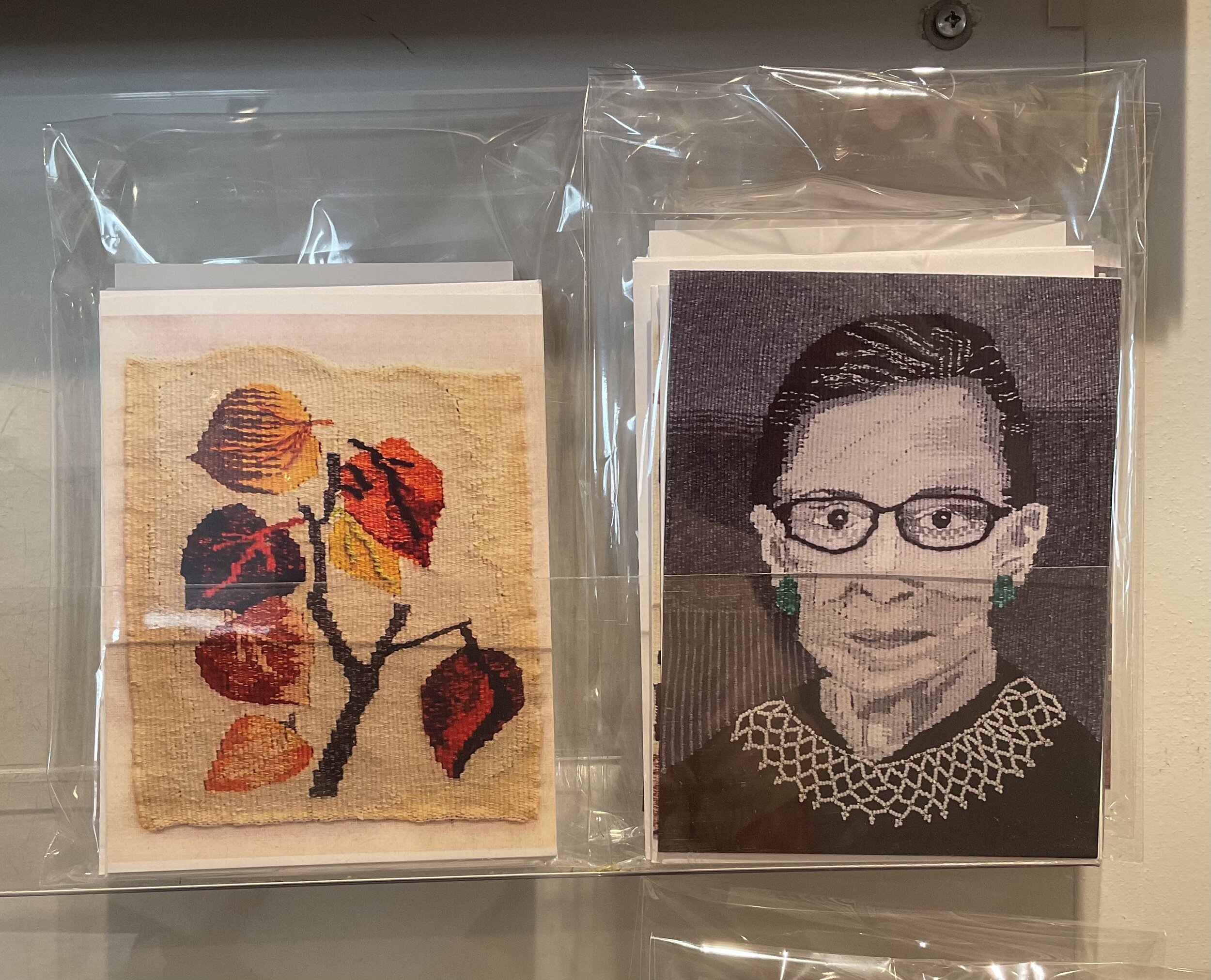“It’s My Body”, Handwoven Tapestry, 19” x 26”. The subject of this piece, Women’s Health, is one of the hardest of all to represent with a tapestry. I didn’t want ot make it all about abortion and I didn’t want to back off too much either. What I tried to capture is how archaic it is that laws written by mostly men are still determining what we can do with our bodies. The issues are many: ability to procure contraceptives, menopause, violence against women, female genital mutilation, higher rate of dementia and abortion.
That is why I chose to use as my model for this tapestry a painting by Titian, “Danae”, painted in the 1560’s. The use of birth control and abortion has a long history, as well as a long history of being contentious. The idea that pregnancies can be prevented or stopped has raised ethical and moral issues, and, like today in the Middle Ages you will find many opinions about what should or shouldn’t be done.
The recent decision by the Supreme Court to reverse Roe v. Wade has made me very sad. I believe we should trust women and their doctors to make the right decision for themselves.
Pregnancy and childbirth still carry health risks to the mother. High blood pressure and preeclampsia, diabetes and hperemesis gravidarum are not uncommon during pregnancy. And maternal mortality is still a risk in the U.S. especially in many southern states, including South Carolina a, where the death rate is higher than the national average.
The thirteenth amendment to the Constitution states: “Neither slavery nor involuntary servitude, except as punishment for crime whereof the arty shall have been duly convicted shall exist within the United States, or any place subject to their jurisdiction.?
It is my opinion that forcing a woman to carry a child for nine months and labor through its birth against her will is the very definition of involuntary servitude and should be against the thirteenth amendment.
“With sorrow - for this Court, but more, for the many millions of American women who have today lost a fundamental constitutional protection - we dissent,” Justices Breyer, Sotomayer and Kagan on the reversal of Roe v. Wade, June 24, 2022
